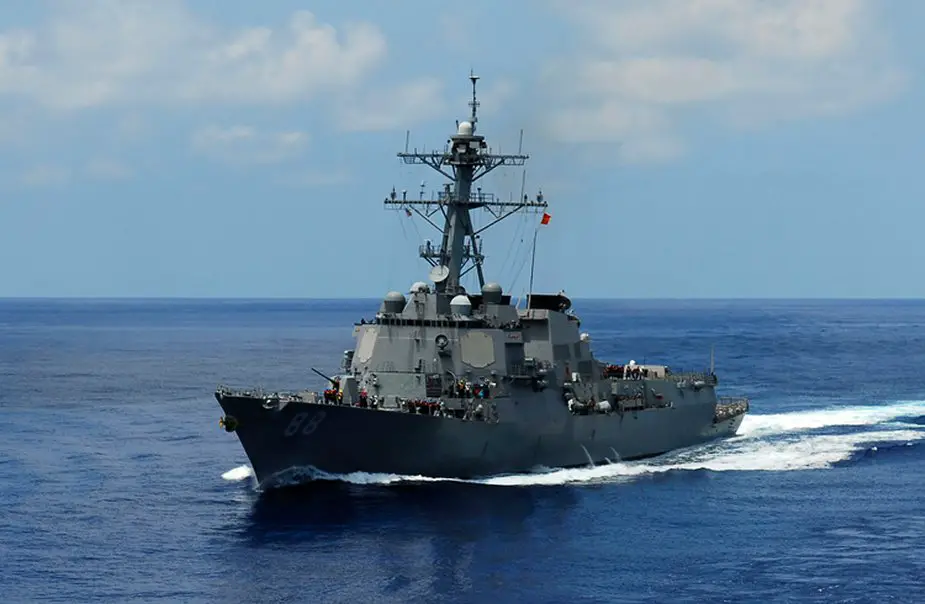Breaking news
Northrop Grumman is helping to digitally transform the US Navy.
Imagine a scenario in which the U.S. Navy identifies a new air, surface or subsurface threat while monitoring an adversary’s training exercise. That new threat metadata is then delivered to a software factory’s Continuous Integration/Continuous Deployment (CI/CD) pipeline.
Follow Navy Recognition on Google News at this link
 Arleigh Burke-class destroyer USS Preble DDG-88 (Picture source: Northrop Grumman)
Arleigh Burke-class destroyer USS Preble DDG-88 (Picture source: Northrop Grumman)
Within 24 hours, every Navy surface ship operating at sea receives a compiled and tested combat system software patch to address the threat.
As a DevSecOps industry leader, Northrop Grumman is drawing on years of Lean-Agile system and software development experience to help the Navy turn its combat system speed-to-fleet vision into reality.
Northrop Grumman has system coordinator responsibilities for Unified Platform (UP) for U.S. Cyber Command, and is also performing on the U.S. Air Force’s five-year Software DevSecOps Basic Ordering Agreement (BOA). On UP, Northrop Grumman is creating and rapidly deploying cyber capabilities across the Department of Defense using the Air Force Platform One ecosystem.
Northrop Grumman’s UP work builds on the Cyber Mission Platform (CMP) program where Northrop Grumman reduced the CI/CD Pipeline from months to days and reduced average release installation from hours to minutes.
Northrop Grumman also works with industry partners, including small businesses, to enhance core team competencies.
Northrop Grumman leverages its “Factory in a Box” containerized software development environment approach to work coding and refactoring challenges in real-time, collaboratively with teammates from the defense and software industries.
Northrop Grumman’s cross-functional team is ready to bring fresh ideas to the Navy Forge software factory later this year, but recognizes that Lean-Agile and DevSecOps are only two pieces of the equation. The Northrop Grumman team is also leveraging its strong model-based systems engineering tools and techniques to help ensure the Navy has a framework for understanding the combat systems architecture it has today, and a roadmap toward the integrated combat system architecture of tomorrow.
USS Preble (DDG-88) is an Arleigh Burke-class destroyer in the United States Navy. She is the sixth U.S. Navy ship named in honor of Commodore Edward Preble, who served in the American Revolutionary War and was one of the early leaders of the Navy.
The Arleigh Burke-class of guided missile destroyers (DDGs) is a United States Navy class of destroyer built around the Aegis Combat System and the SPY-1D multifunction passive electronically scanned array radar. The class is named for Admiral Arleigh Burke, an American destroyer officer in World War II, and later Chief of Naval Operations. The lead ship, USS Arleigh Burke, was commissioned during Admiral Burke's lifetime.
These warships were designed as multimission destroyers, able to fulfil the strategic land strike role with Tomahawk missiles; antiaircraft warfare (AAW) role with powerful Aegis radar and surface-to-air missiles; antisubmarine warfare (ASW) with towed sonar array, anti-submarine rockets, and ASW helicopter; and antisurface warfare (ASuW) with Harpoon missile launcher. With upgrades to their AN/SPY-1 phased radar systems and their associated missile payloads as part of the Aegis Ballistic Missile Defense System, the ships of this class have also begun to demonstrate some promise as mobile antiballistic missile and anti-satellite weaponry platforms, operating on 15 ships as of March 2009. Some versions of the class no longer have the towed sonar or Harpoon missile launcher. Their hull and superstructure were designed to have a reduced radar cross-section.


























